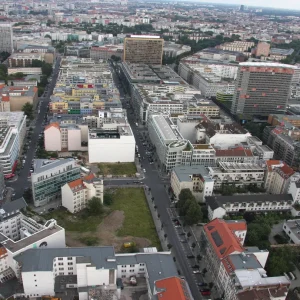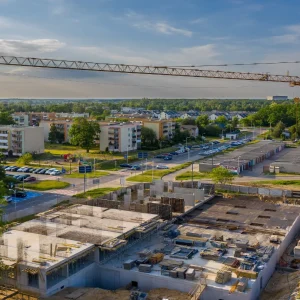
Inflation, a pervasive economic phenomenon, significantly affects various aspects of urban life. While its immediate effects are often felt through rising prices of goods and services, its broader implications on urban policy, planning, and transportation are profound. This article delves into how inflation shapes urban landscapes, influences policy decisions, and impacts the future of transportation systems.
Understanding Inflation
Inflation is the rate at which the general level of prices for goods and services rises, subsequently eroding purchasing power. It can be driven by demand-pull factors (where demand for goods and services exceeds supply), cost-push factors (where production costs increase), and built-in inflation (where prices rise due to adaptive expectations). For urban planners and policymakers, understanding these dynamics is crucial in creating resilient urban environments.
Inflation and Urban Policy
Budget Constraints and Public Spending
Inflation directly impacts the budgets of urban governments. As prices rise, the cost of maintaining public infrastructure and services also increases. This can lead to budget constraints, forcing policymakers to prioritise essential services and potentially delay or cancel non-critical projects. Urban areas might see reduced spending on public amenities, impacting the quality of life for residents.
Housing and Land Use Policies
Inflation significantly affects housing markets. Rising construction costs due to inflation can lead to higher property prices, making housing less affordable. Urban policies need to adapt by promoting affordable housing schemes and revising zoning laws to allow for higher density developments. Furthermore, inflation can exacerbate land speculation, making it challenging for cities to manage land use effectively.
Social Equity Considerations
Inflation can disproportionately impact lower-income households, widening the socio-economic divide. Urban policies must incorporate measures to protect vulnerable populations from the adverse effects of inflation. This could include subsidising public transport, offering housing assistance, and ensuring access to essential services. Social equity considerations become paramount in mitigating the adverse effects of inflation on disadvantaged groups.
Planning for an Inflationary Environment
Long-term Infrastructure Projects
Urban planning typically involves long-term infrastructure projects, such as roads, bridges, and public transport systems. Inflation can increase the cost of these projects, leading to budget overruns and delays. Planners need to incorporate inflation projections into their cost estimates and explore innovative financing methods, such as public-private partnerships, to manage these financial pressures.
Flexible and Adaptive Planning
The unpredictable nature of inflation necessitates flexible and adaptive urban planning strategies. Cities need to develop contingency plans to adjust quickly to changing economic conditions. This could involve modular infrastructure designs that can be scaled up or down based on available funding, as well as policies that allow for rapid response to emerging economic challenges.
Sustainable Development
Sustainability becomes even more critical in an inflationary environment. Investing in sustainable infrastructure, such as energy-efficient buildings and renewable energy sources, can reduce long-term costs. Urban planners should prioritise sustainable development practices that not only address environmental concerns but also provide economic stability in the face of inflation.
Transportation Systems Under Inflationary Pressures
Public Transport Funding
Public transportation systems are heavily impacted by inflation. Rising fuel costs, higher wages for transit workers, and increased prices for maintenance and new vehicles can strain public transport budgets. Cities may need to increase fares, which can reduce ridership, or cut services, which can disproportionately affect those who rely on public transport. Ensuring sustainable funding models, such as congestion pricing or dedicated transport taxes, can help mitigate these challenges.
Infrastructure Maintenance and Development
Maintaining and developing transport infrastructure becomes more costly during periods of inflation. Delaying maintenance can lead to deteriorating infrastructure and higher long-term costs. Cities must prioritise essential maintenance and explore cost-effective solutions, such as using durable materials and adopting advanced technologies that reduce maintenance needs.
Innovation and Technology
Inflation can spur innovation as cities look for cost-effective solutions to transportation challenges. For example, autonomous vehicles and smart city technologies can optimise traffic flow and reduce operational costs. Investments in digital infrastructure, such as real-time monitoring systems, can improve efficiency and help cities manage transport networks more effectively.
Case Studies and Examples
London: Adapting to Economic Challenges
London, one of the world’s largest and most dynamic cities, offers valuable insights into managing urban policy and transportation under inflationary pressures. The city’s congestion charge, introduced in 2003, is an example of innovative funding to support public transport. By charging vehicles entering the city centre, London has been able to invest in its public transport network, reducing reliance on government budgets strained by inflation.
Moreover, London’s emphasis on sustainable transport options, such as cycling and walking infrastructure, has mitigated some of the cost pressures associated with inflation. The city’s Cycle Superhighways and pedestrian-friendly initiatives have not only promoted healthier lifestyles but also reduced the strain on public transport systems.
Tokyo: Balancing Development and Costs
Tokyo, a megacity known for its efficient public transport system, faces significant challenges due to inflation. The Tokyo Metropolitan Government has implemented several measures to address these challenges, including public-private partnerships to finance infrastructure projects. By leveraging private investment, Tokyo has been able to maintain and expand its transport network despite rising costs.
Additionally, Tokyo’s focus on technology integration, such as automated ticketing systems and real-time transit information, has improved operational efficiency and reduced costs. The city’s commitment to continuous improvement and innovation serves as a model for other urban areas grappling with inflation.
Future Directions and Recommendations
Integrating Economic Forecasting in Urban Planning
Cities must integrate economic forecasting into their planning processes. By incorporating inflation projections and other economic indicators, urban planners can make more informed decisions and develop strategies that are resilient to economic fluctuations. This proactive approach can help cities better manage the impacts of inflation on public services and infrastructure.
Emphasising Public Engagement and Transparency
Public engagement and transparency are critical in managing urban policy and transportation systems under inflationary pressures. Engaging residents in the decision-making process and clearly communicating the challenges and trade-offs involved can build public support for necessary measures, such as fare increases or service adjustments. Transparency in budgeting and spending can also enhance trust and accountability.
Promoting Regional Collaboration
Regional collaboration can help mitigate the impacts of inflation on urban areas. Cities within a region can pool resources, share best practices, and coordinate infrastructure projects to achieve economies of scale. Collaborative efforts can also attract larger investments and support from national governments, providing additional financial stability in an inflationary environment.
Investing in Human Capital
Investing in the skills and capabilities of the urban planning and transportation workforce is essential. Training programmes that focus on financial management, economic analysis, and innovative planning techniques can equip professionals with the tools needed to navigate inflationary pressures. A skilled workforce is better prepared to develop and implement effective solutions in a challenging economic landscape.
Conclusion
Inflation presents significant challenges to urban policy, planning, and transportation systems. However, by understanding its impacts and implementing adaptive strategies, cities can continue to thrive. Integrating economic forecasting, prioritising sustainable development, leveraging technology, and promoting regional collaboration are key to managing inflation’s effects. Ultimately, resilient urban environments are built through proactive planning and innovative solutions that address both immediate and long-term economic realities.






